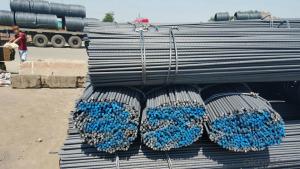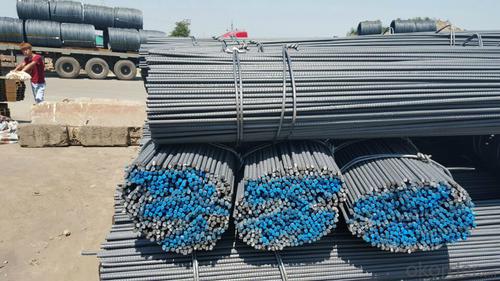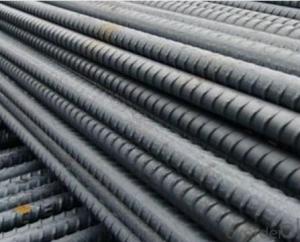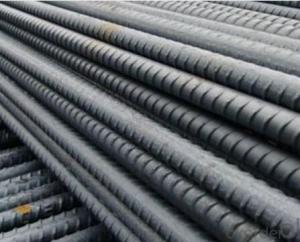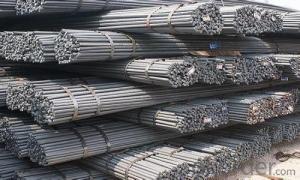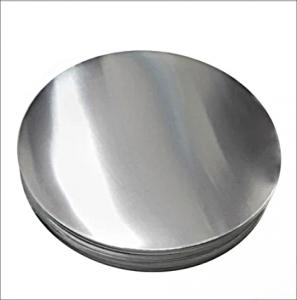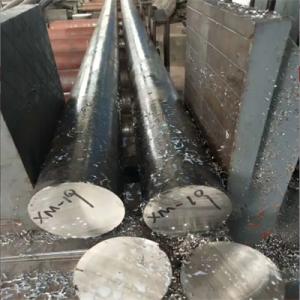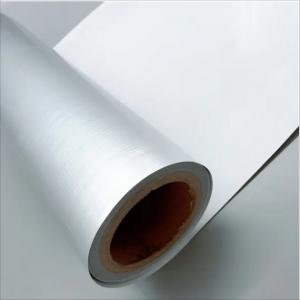Rebar Home Depot 1 2 Steel Cold Rolled Deformed Bar for Container
- Loading Port:
- China main port
- Payment Terms:
- TT OR LC
- Min Order Qty:
- 30 m.t.
- Supply Capability:
- 100000 m.t./month
OKorder Service Pledge
OKorder Financial Service
You Might Also Like
Specification
Product Description:
Specifications of Steel Cold Rolled Deformed Bar For Container
Standard | GB | HRB400 | |
Diameter | 6mm,8mm,10mm,12mm,14mm,16mm,18mm,20mm, 22mm,25mm,28mm,32mm,36mm,40mm,50mm | ||
Length | 6M, 9M,12M or as required | ||
Place of origin | Hebei, China mainland | ||
Advantages | exact size, regular package, chemical and mechanical properties are stable. | ||
Type | Hot rolled deformed steel bar | ||
Chemical Composition of Steel Cold Rolled Deformed Bar For Container
Grade | Technical data of the original chemical composition (%) | ||||||
C | Mn | Si | S | P | V | ||
HRB400 | ≤0.25 | ≤1.60 | ≤0.80 | ≤0.045 | ≤0.045 | 0.04-0.12 | |
Physical capability | |||||||
Yield Strength (N/cm²) | Tensile Strength (N/cm²) | Elongation (%) | |||||
≥400 | ≥570 | ≥14 | |||||
Usage and Applications of Steel Cold Rolled Deformed Bar For Container
Deformed bar is widely used in buildings, bridges, roads and other engineering construction. Big to highways, railways, bridges, culverts, tunnels, public facilities such as flood control, dam, small to housing construction, beam, column, wall and the foundation of the plate, deformed bar is an integral structure material. With the development of world economy and the vigorous development of infrastructure construction, real estate, the demand for deformed bar will be larger and larger..
Packaging & Delivery of Steel Cold Rolled Deformed Bar For Container
Packaging Detail: products are packed in bundle and then shipped by container or bulk vessel, deformed bar is usually naked strapping delivery, when storing, please pay attention to moisture proof. The performance of rust will produce adverse effect.
Each bundle weight: 2-3MT, or as required
Payment term: TT or L/C
Delivery Detail: within 45 days after received advanced payment or LC.
Label: to be specified by customer, generally, each bundle has 1-2 labels
Trade terms: FOB, CFR, CIF
Note:
1. Our products are produced according to national standard (GB), if not, supply according to national standards (GB) or agreement as customer required.
2. Other Grade and Standard Deformed Steel Bar we can supply:
Grade: GR40/GR60, G460B/B500A/B500B/B500C,BST500S
Standard: ASTM, BS, DIN
The Minimum Order Quantity of these products is high, and need to be confirmed.
3. We can not only supply Deformed Steel Bar; if you need anything about building materials, please contact us for further information.
4. Please send us your detail specifications when inquire. We will reply to you as soon as possible. We sincerely hope we can establish a long stable business relationship.
- Q:How can the quality of steel rebars be tested?
- To ensure the strength and reliability of steel rebars, there are various methods available for testing their quality. Some commonly used techniques include: 1. Conducting a visual inspection to identify any visible defects like surface cracks, unevenness, or corrosion that may impact performance. 2. Analyzing the chemical composition of the rebars through spectroscopy or similar methods to ensure compliance with required standards. This analysis verifies the presence and percentage of elements such as carbon, manganese, and silicon. 3. Testing the rebars' tensile strength by subjecting a sample to tension until it fractures. The maximum force applied before breaking determines the tensile strength and helps identify weak spots or inconsistencies. 4. Evaluating the ductility of rebars through a bend test, bending them to a specific angle without any signs of cracking or fracture. This ensures the rebars can withstand bending and shaping during construction without compromising their structural integrity. 5. Using ultrasonic testing to detect internal flaws or defects within the rebars. This non-destructive method helps identify hidden cracks, voids, or inclusions that could weaken the rebars. 6. Determining the hardness of the rebars using the Rockwell or Brinell hardness test. This test measures the resistance of the rebar's surface to indentation, providing insight into its strength. 7. Subjecting the rebars to corrosion resistance testing, such as salt spray testing or electrochemical methods, to assess their resistance against rust and other types of corrosion. By combining these testing methods, manufacturers, construction companies, and engineers can ensure that steel rebars meet the required quality standards and can withstand the intended load and environmental conditions.
- Q:Can steel rebars be used in soundproof structures?
- Steel rebars, although they can be utilized in soundproof structures, do not bear the sole responsibility for soundproofing. Their main purpose lies in reinforcing concrete structures like walls or floors. While they can somewhat assist in diminishing sound transmission, accomplishing effective soundproofing necessitates the use of supplementary materials and techniques. To establish a soundproof structure, various factors must be taken into account. One crucial aspect is the mass of the structure. Due to their weight and density, steel rebars augment the mass of the structure, thus aiding in reducing sound transmission. Nevertheless, the efficacy of soundproofing also relies on the overall design, construction techniques, and integration of other sound-absorbing materials. To heighten the soundproofing capabilities of a structure, additional materials can be incorporated, such as acoustic insulation, soundproofing panels, or resilient channels. Acoustic insulation materials like mineral wool or acoustic foam can be installed within the walls or floors to absorb sound waves and prevent their passage through the structure. Soundproofing panels can also be affixed to surfaces to either reflect or absorb sound waves, further diminishing noise transmission. Furthermore, proper construction techniques should be employed to ensure the absence of gaps or air leaks that may permit sound to travel through. The utilization of resilient channels, which isolate the structure from surrounding surfaces, can also aid in reducing sound transmission. In conclusion, while steel rebars can contribute to the soundproofing of a structure through the augmentation of its mass, they alone are inadequate for achieving a fully soundproof environment. Effective soundproofing necessitates a combination of design, construction techniques, and the integration of supplementary sound-absorbing materials to attain the desired level of sound reduction.
- Q:Are there any limitations on the maximum length of steel rebars?
- Yes, there are limitations on the maximum length of steel rebars. The length of steel rebars is typically limited by transportation and handling constraints. Rebars are often manufactured in standard lengths that can be easily transported and manipulated on construction sites. However, longer lengths can be custom-made if required, but they may have practical limitations based on logistical factors.
- Q:Are steel rebars suitable for use in historical restoration projects?
- Steel rebars can be suitable for use in historical restoration projects, depending on the specific requirements and circumstances. Steel rebars offer several advantages, such as their high strength, durability, and ability to reinforce structures effectively. These qualities make them a popular choice in modern construction and renovation projects. However, when considering the use of steel rebars in historical restoration projects, it is crucial to take into account the preservation and authenticity of the original structure. Historical buildings often have unique architectural features and materials that should be respected and preserved. In some cases, the use of steel rebars may not be suitable, especially if it compromises the historical integrity or visual appearance of the structure. This is particularly relevant for buildings with significant historical value or those that are protected by heritage regulations. If steel rebars are deemed necessary for structural reinforcement in a historical restoration project, it is essential to ensure that they are discreetly integrated, minimizing their visual impact. This can be achieved by concealing them within the original materials or using techniques that replicate the appearance of the original construction. In summary, while steel rebars can offer structural benefits and durability, their use in historical restoration projects should be carefully evaluated to ensure that they align with the preservation goals and requirements of the specific project. Preservation of historical authenticity should always be a priority in such endeavors.
- Q:What is the minimum lap length required for steel rebars in concrete?
- The minimum lap length required for steel rebars in concrete is typically specified by engineering codes and standards, which vary depending on factors such as the type of rebar, the diameter of the rebar, and the intended structural design. It is important to consult the specific code or standard relevant to the project to determine the minimum lap length requirements.
- Q:Can steel rebars be used in industrial construction projects?
- Yes, steel rebars can be used in industrial construction projects. They are commonly used to reinforce concrete structures such as beams, columns, and foundations, providing strength and stability to the overall construction.
- Q:What is the process of cutting steel rebars on-site?
- To ensure precise and accurate cuts, there are several steps involved in cutting steel rebars on-site. Here's a general overview of the process: 1. Measuring and Marking: Start by measuring the required length of the steel rebar using measuring tools like a tape measure. Once the desired length is determined, mark it on the rebar using a chalk line or permanent marker. 2. Prioritizing Safety: Before proceeding with the cutting process, it's essential to prioritize safety. Workers must wear appropriate personal protective equipment (PPE) such as gloves, safety glasses, and steel-toe boots. Additionally, ensure that the work area is clear of any obstacles or hazards. 3. Setting up the Cutting Tools: On-site, there are various cutting tools available for steel rebars like angle grinders with cutting discs, reciprocating saws with metal-cutting blades, or rebar cutters. Follow the manufacturer's instructions to properly set up and secure the chosen tool. 4. Cutting the Rebar: With the cutting tool prepared, securely position the marked section of the rebar on a stable surface. Carefully guide the cutting tool along the marked line, applying consistent pressure to achieve a clean and precise cut. Maintain control of the cutting tool throughout the process to prevent accidents. 5. Inspecting the Cut: After making the cut, it's important to inspect its quality. The cut end should be smooth and free from any burrs or rough edges. Use a file or grinding tool if needed to smoothen any imperfections. 6. Handling and Disposing: Once the steel rebar is cut to the desired length, it can be safely handled and used for its intended purpose. Dispose of any leftover pieces or scraps properly, following local regulations for metal waste disposal. It's important to note that the specific process and tools used for cutting steel rebars on-site may vary depending on the construction site's requirements, available equipment, and safety protocols. Always follow the manufacturer's instructions and consult professionals when performing such tasks.
- Q:How do steel rebars affect the overall load-bearing capacity of a structure?
- Steel rebars significantly enhance the load-bearing capacity of a structure by reinforcing the concrete and enhancing its tensile strength. The addition of steel rebars improves the structural integrity, increases resistance to bending and cracking, and allows the structure to withstand heavier loads and external forces.
- Q:How do steel rebars affect the flexural strength of reinforced concrete elements?
- The flexural strength of reinforced concrete elements is greatly influenced by steel rebars. Rebars improve the ability of concrete elements to withstand bending or flexural forces. To provide tensile strength, high-strength steel rebars are embedded within the concrete. Concrete is strong when compressed but weak when subjected to tension. By incorporating rebars, the resulting composite material benefits from the concrete's high compressive strength and the steel's excellent tensile strength. When a flexural load is applied to a reinforced concrete element, such as a beam or slab, the rebars distribute the load across the section. This effectively resists the concrete's tendency to crack and fail under tension. Acting as reinforcements, the rebars resist the tensile forces that occur due to bending, thus increasing the structure's flexural strength. The flexural strength of reinforced concrete elements is greatly influenced by the size, spacing, and arrangement of the rebars. Proper design and placement of rebars ensure optimal resistance to anticipated bending forces. Factors such as the element's span, expected loads, and desired strength level must be carefully considered. In addition, the bond between the rebars and the concrete is crucial for transferring bending stresses. Sufficient concrete cover over the rebars protects them from corrosion, ensuring their durability and the integrity of the structure. Corrosion weakens the bond between steel rebars and the surrounding concrete, compromising the flexural strength of the reinforced element. In conclusion, steel rebars greatly enhance the flexural strength of reinforced concrete elements by providing necessary tensile strength to resist bending forces. Proper design, placement, and bonding of rebars are vital to ensuring the durability and structural integrity of reinforced concrete structures.
- Q:How do steel rebars affect the overall strength of a structure?
- Steel rebars significantly enhance the overall strength of a structure by providing reinforcement and increasing its tensile strength. They act as a skeleton within the concrete, distributing the load more evenly and preventing cracks or failures.
1. Manufacturer Overview |
|
|---|---|
| Location | |
| Year Established | |
| Annual Output Value | |
| Main Markets | |
| Company Certifications | |
2. Manufacturer Certificates |
|
|---|---|
| a) Certification Name | |
| Range | |
| Reference | |
| Validity Period | |
3. Manufacturer Capability |
|
|---|---|
| a)Trade Capacity | |
| Nearest Port | |
| Export Percentage | |
| No.of Employees in Trade Department | |
| Language Spoken: | |
| b)Factory Information | |
| Factory Size: | |
| No. of Production Lines | |
| Contract Manufacturing | |
| Product Price Range | |
Send your message to us
Rebar Home Depot 1 2 Steel Cold Rolled Deformed Bar for Container
- Loading Port:
- China main port
- Payment Terms:
- TT OR LC
- Min Order Qty:
- 30 m.t.
- Supply Capability:
- 100000 m.t./month
OKorder Service Pledge
OKorder Financial Service
Similar products
New products
Hot products
Hot Searches
Related keywords
